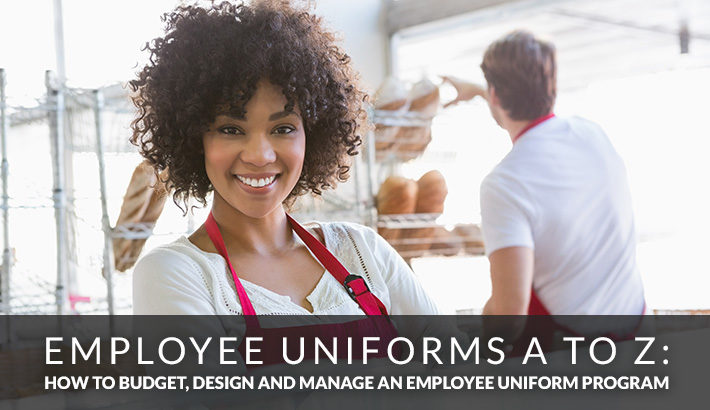Once a business decides to implement a uniform program, you need to develop a plan for budgeting, designing and managing the program.
 Understanding the advantages and disadvantages of wearing a uniform provides you with an excellent foundation for creating and sustaining a reasonable, cost-effective and successful program.
Understanding the advantages and disadvantages of wearing a uniform provides you with an excellent foundation for creating and sustaining a reasonable, cost-effective and successful program.
This guide outlines everything you need to consider when planning a uniform program to ensure the policies and plans you implement succeed.
Existing Businesses Versus Start-Ups
If you are a start-up that has not yet opened its doors, you won’t have the headache of obtaining stakeholder buy-in from your existing employees. The process and implementation may take the same amount of time, but you won’t have the difficulties associated with making a change from your current way of purchasing, assigning and managing uniforms.
Regulatory Requirements
Sometimes laws and regulations require you to have a uniform policy. For example, the Occupational, Safety and Health Administration (OSHA) outlines specific uniform requirements, depending on your industry, that employers must meet.
For example, work-place safety may require all your workers wear long sleeve shirts or a hat, or other personal protective clothing. Regulatory requirements drive pricing and design considerations to a certain extent, so make sure you know what OSHA, or your state and local municipality, expect.
Regional and Local Considerations
Climate may dictate a difference in a uniform policy for a business in Upstate New York than for one in Florida.
If your retail establishment is in an area predominately inhabited by young singles, the look for your project could be different than what would be appropriate for a store in a senior’s community.
Religious and cultural sensitivities are also considerations. The demographics of your client base could lead you to choose one style of uniform over another.
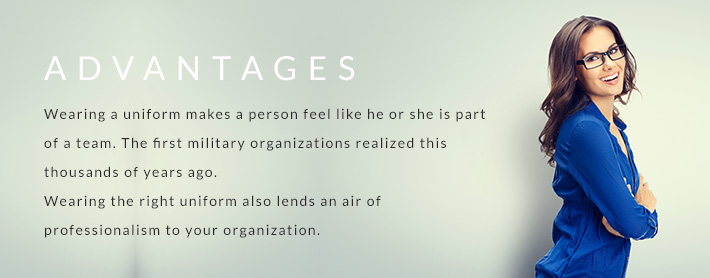
Advantages of Requiring Employee Uniforms
Business owners will find several advantages of a uniform program. Consideration of the potential advantages will help you design an appropriate program for your brand.
Employee Bonding
Wearing a uniform makes a person feel like he or she is part of a team. The first military organizations realized this thousands of years ago.
When workers wear the same outfits, you help develop their sense of pride in the company and in their jobs. Employees feel a sense of loyalty and belonging when wearing a uniform.
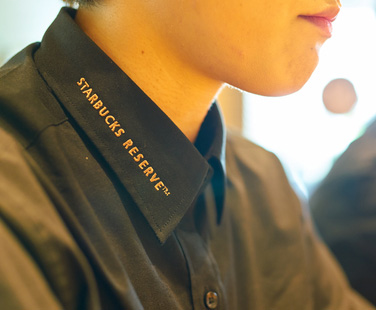 Advertising
Advertising
You can use employee uniforms as part of your brand marketing strategy. For example, you can take a blank hat and have your logo, or maybe your company name and address, embroidered or screen printed on it. Employees will wear the hats out in public, making your brand and logo more visible and known.
If you own a retail establishment, wearing a uniform helps to identify clerks and sales associates to your customers.
Security
If you develop the right program, you can use the colors, styles or something else related to the uniform to quickly determine if someone should or should not be in a particular area of your plant, shop or office.
Safety
The right design of a uniform for the healthcare or food services industry can help minimize cross-contamination, for example. High-tech manufacturers can lessen the effects of static electricity or other environmental dangers to the operation.
Professionalization
Wearing the right uniform lends an air of professionalism to your organization. Customers will view your product or service in a positive light, and might eventually subconsciously develop a sense of trust and ease each time they see someone wearing it.
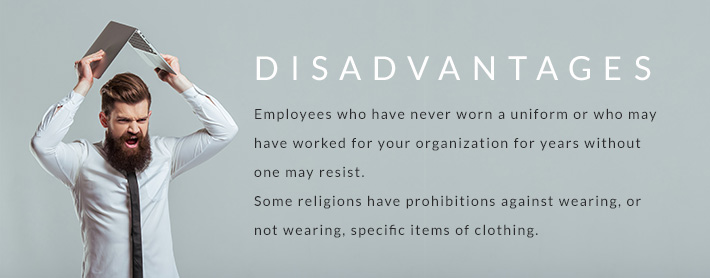
Disadvantages
Employee Intransigence
Employees who have never worn a uniform or who may have worked for your organization for years without one may resist. They may feel self-conscious or embarrassed. The person may also resent being forced to do something they may perceive as the employer attempting to interfere with his or her personal choices.
While you may not ever be able to please the person, this argues, however, for careful selection of the styles, colors and clothing types to minimize objections of this sort. Consider soliciting employee input when initiating or changing a uniform program.
Comfort
For outdoor work, for example, you may have a nice comfortable uniform for the winter, but the heavier material may not be appropriate for the summer.
Some people’s body types might not be conducive to certain styles.
Stereotyping
The image or stereotype the public may have, for example, of the healthcare profession may prejudice them for or against your employees if your uniforms resemble those of a hospital worker.
Cultural or Religions Objections
Some religions have prohibitions against wearing, or not wearing, specific items of clothing. Some employees may find certain types of clothing or branding slogans personally offensive.
Uniform Considerations by Industry
One of the factors to consider is what sort of business you are designing the uniforms for.
Here are a few sectors, along with some questions to ask yourself:

Healthcare
Hygiene is one of the leading concerns of a healthcare worker, hence consider sanitation needs. You don’t want, for example, pants with cuffs, or fabric that easily traps dirt.
If it is a hospital, you need to consider color coding for easy identification during emergency room operations.
Spas and Gyms
Although a spa or gym is not a healthcare facility, hygiene is essential in these professions, too. Comfort, along with branding, is also something to consider. A uniform like a blank polo shirt, with the name of the facility on it, for example, might work best.
Delivery Services
People want to feel reassured when a stranger knocks on his or her door. You need to choose something that looks professional and clearly and quickly identifies your employee.
Food Service
Your food service workers should look clean and neat. Lighter colors tend to reflect heat and keep your servers and wait staff more comfortable.
Construction
In many construction industry jobs, safety wear drives the uniform look. Hard-toed shoes, hard hats and durable bright-colored outerwear are the usual attire on job sites.
Retail
Depending on what retail sector your company belongs to may drive the style of uniform. A coffee barrister’s uniform will have a different look from a hardware store, for example.
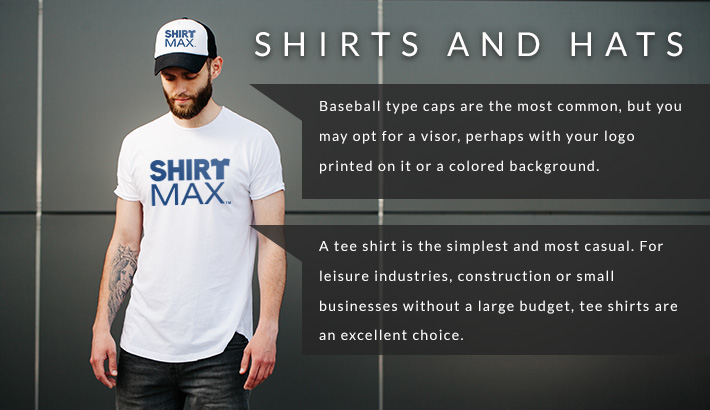
Shirts and Hats
Shirt and hat coordination often are the simplest form of uniforms that many enterprises use to distinguish their brand.
Shirts
The three types of shirts to review when planning a uniform program are tees, polos and dress shirts.
A tee shirt is the simplest and most casual. For leisure industries, construction or small businesses without a large budget, tee shirts are an excellent choice.
Polo shirts connote an air of casual professionalism. For less-formal office environments, polos work well.
Dress shirts provide the most professional look. To the public, a worker in a dress shirt invokes feelings that you are dealing with a seasoned professional, such as in an upscale restaurant or hotel.
Hats
Baseball type caps are the most common, but you may opt for a visor, perhaps with your logo printed on it or a colored background.
Specialty hats, such as a guide hat, cowboy hat or a Stetson may be appropriate, depending on your industry.
Who Pays and How?
 Companies have different methods and means of buying and maintaining a work uniform. Some provide an employee allowance, along with parameters such as the type of shirt and color.
Companies have different methods and means of buying and maintaining a work uniform. Some provide an employee allowance, along with parameters such as the type of shirt and color.
Others use a sort of clothing subsidy, like the military, to purchase the uniforms. And most commonly, others purchase the uniforms directly on behalf of the employee.
Still, others may lease or purchase a pool of uniforms, have them cleaned, and workers change into them when they arrive at the job site.
Launching Your Program
One of the first things you need to do is establish why you want to implement a uniform policy. Branding may be your primary objective. Perhaps you want to encourage a more team-centric attitude among your employees. You need to decide this before beginning the implementation process.
For existing firms, input and stakeholder buy-in is critical. Consider establishing a committee. Let your employees know about the change and solicit their ideas and suggestions.
Identify Any Specific Requirements
Based on your industry, are there any specific requirements you need to incorporate into the uniform? Hairstylists, for example, commonly wear black in order to see the client’s true color since wearing another color may make the hair color appear different.
Review any OSHA regulations specifically for construction sites, restaurants and hospitals. If you work in a hospital, what are the color codes used?
Branding
What sort of branding, if any, do you want to embody in the design? Do you want to use a logo, a corporate motto or something else?
Mock-Ups
Consider ordering one set of the design and have someone model it. Have your staff review and comment on it before you order the final version in bulk.
Types of Programs
There are three types of uniform programs to consider: direct purchase, rental with cleaning, and rental without cleaning. There are pros and cons to each.
 Direct Purchase
Direct Purchase
One advantage of making a direct purchase is that there are no recurring costs. You purchase the uniforms one time. You can also design your own uniform and include whatever branding on the garments you want. There are no hidden fees with direct purchase, either
Direct purchase may not be advantageous for companies with high turn-over rates.
Rental With Cleaning
If you rent uniforms and have them cleaned regularly, you can budget for the exact amount each week. There are no hygiene worries. If a garment is damaged, most contracts require the cleaning company to replace it.
One of the disadvantages rental with cleaning is that no matter how many uniforms you may send for cleaning, you will pay a fixed rate. You may also be required to purchase the uniforms at a fixed price, depending on the length of the contract.
Rental without Cleaning
Rental without cleaning provides you with a lot of options. You won’t need to purchase the uniforms at the end of the contract. Most companies will repair or replace damaged rentals.
Rentals with or without cleaning may be more expensive in the long-term than direct purchase.
Questions for the Vendor
Choosing the right vendor for your uniform needs takes some research. This will save you both money and time.
When researching, look for answers to the following questions:
- Does the vendor specialize in providing uniforms for a particular industry?
- How long has the vendor been in business?
- What sort of selection does the company offer?
- Do they offer screen printing, embroidery or other services to complement their uniform sales, or will you need to send the clothing elsewhere?
- How do the prices compare to competitors?
- Are there any discounts offered for repeat business?
- How accessible are the customer service and sales representatives?
- What’s the turnover time? How quickly can they get the uniform to you, especially if you have a special or emergency request?
- Do they offer a wide range of sizes?
Sizing the Uniforms
 Sizing the uniforms for your workers takes careful planning. Asking each person often results in incorrect sizes. People either don’t know their size or will provide you with a “wishful thinking” size.
Sizing the uniforms for your workers takes careful planning. Asking each person often results in incorrect sizes. People either don’t know their size or will provide you with a “wishful thinking” size.
Measuring each person individually probably works best, but if you have hundreds or thousands of employees scattered among several locations, this takes time and coordination.
Replacement Cycles
Don’t forget about budgeting for a replacement cycle. The replacement cycle depends on several things, such as the type of work, number of garments provided to each worker, how often the clothes are cleaned and other factors.
For manual labor jobs, the replacement cycle may be much shorter than for retail work.
Human Resources
Proper management of a workplace uniform policy includes drafting and publishing a written policy by your Human Relations Department. This will eliminate misunderstandings.
The policy should specify what management is responsible for and what the employee’s responsibilities are.
For example, the company may choose to purchase three sets of uniforms once a year, along with specific work-related equipment like hard hats, safety belts or other items. The employees must maintain and clean the uniforms. The clothes are considered company property, just like the equipment, and must be returned if the employee resigns or is terminated.

Last Word
Instituting an employee uniform policy takes a lot of planning and preparation. Even something as simple as a tee shirt and hat should not be done without giving careful thought to the design, budget and how you will manage the program.
